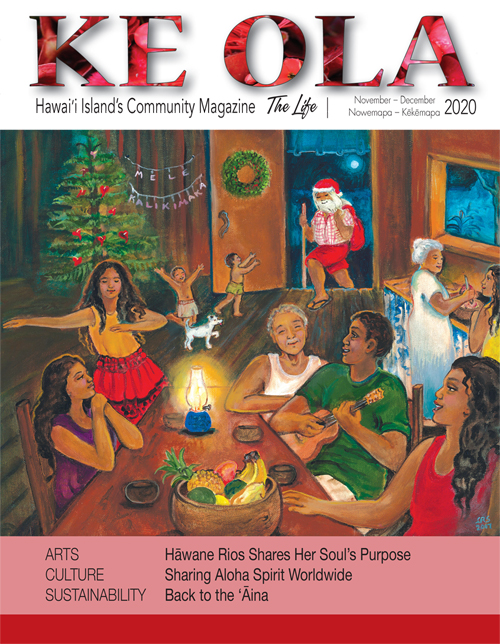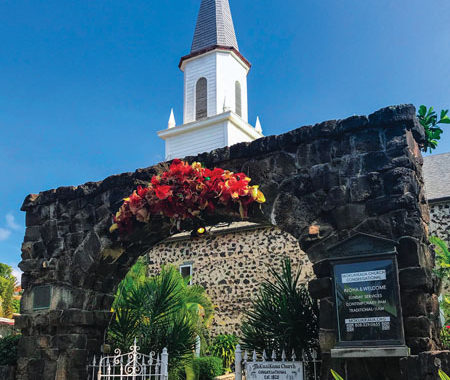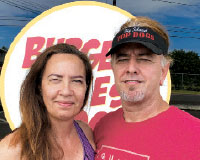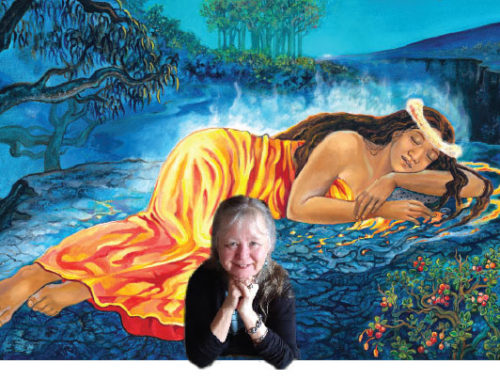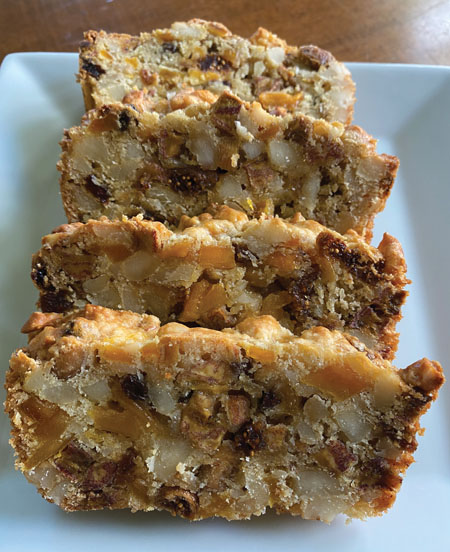
Traveling to the Unknown with a Recipe for German-style Fruitcake

By Brittany P. Anderson
Much of the year has been spent at home, distanced from loved ones, and separated from friends. It is as if we’ve been on a long voyage without knowing where or when we reach our destination.
Centuries of exploration of the seas are documented from oral histories to journals. We know that these voyages were lonely, dangerous, and beautiful, oftentimes all at the same time.
At the time of James Cook’s third arrival in Hawai‘i in 1778, as controversial as it may be, three young German sailors were aboard the HMS Discovery. One such German, Johann Heinrich Zimmermann, defied Captain Cook’s orders and kept a personal diary, which he then published in 1781 beating Cook to print by three years. It contains humorous follies of the captain in addition to matter-of-fact observations of the excursion and launched Zimmermann to fame. He wouldn’t be the last German sailor to bring Hawai‘i to European readers.
1815 the Russian naval ship Rurik with German scholar and aristocrat Adelbert von Chamisso aboard was on an around-the-world scientific journey. While docked in Kailua Bay, Chamisso—a poet and author who decided to try his hand at botany—explored the flora of upcountry Kailua-Kona. He selected several native plant samples, including the hāpu‘u, which was later assigned the scientific name Cibotium chamissoi in his honor.
While anchored on Hawai‘i Island, Chamisso dined with Kamehameha, shaking the king’s hand, an act which left a lasting impression. On Chamisso’s return to Europe, he wrote several Hawai‘i-centric books, including grammatical documentation of the Hawaiian language. His approach to Hawaiian culture was that of profound honor, admiration, and he appreciated the sophistication. It was a unique perspective of the time.
In 1836, just two years before his death, he published three of his journals under the title A Voyage Around the World, detailing his travels to Hawai‘i and other Pacific islands. The book reflects that he had the fortune of shaking hands with three notable men. Chamisso’s shortlist includes King Kamehameha.

For the few traveling Germans that happened to set sail for the great unknown, it was an exploration likes of which they had never seen. Throughout the years, several Germans settled in Hawai‘i, blending their Germanic heritage with Hawaiian culture. Captain Henri Berger of Berlin spent decades conducting the Royal Hawaiian Band. Queen Lili‘uokalani dubbed him “The Father of Hawaiian Music,” as Berger wrote the score to King Kalākaua’s lyrics for the state anthem “Hawai‘i Pono‘i.”
In looking for a recipe that brings both the German explorers and Hawai‘i together in one dish, the fruitcake came to mind. Fruitcakes are humored to be apocalyptic-proof due to their dense and long-lasting nature—a recipe like that seems even more appropriate in 2020.
German früchtebrot (literally translated to fruit bread, or loaf) is a product of avoiding waste; it is made from whatever fruits and nuts are on hand. Done in the Bavarian style, it is much more fruit and nuts than it is cake. For a Hawaiian adaptation, I used macadamia nuts, homemade dehydrated figs, mango, and banana. You can use any combination of nuts and dried fruits you have on hand, as long as the volume amount is equivalent.
Ingredients
1 1/2 cups coarsely chopped macadamia nuts
2 cups coarsely chopped dried fruits, such as fig, mango, banana
1/4 cup raisins
3/4 cup all-purpose flour
1/2 cup sugar
1/2 tsp baking powder
1/2 tsp salt
3 large eggs
1 tsp vanilla extract
Method
In a large bowl, combine the nuts and dried fruits. Combine the flour, sugar, baking powder, and salt. Add this to the nut mixture, stirring until nuts and fruit are well coated. Next, in a small bowl, beat eggs until foamy, then stir in the vanilla extract. Stir the egg mixture into the nut mixture and mix well. Pour into a greased 9×5-inch loaf pan. Bake at 300°F for 1 hour 30 minutes or until a toothpick inserted in the center comes out clean. Cool for 10 minutes before cutting and serving. Can be served warm or cold.
